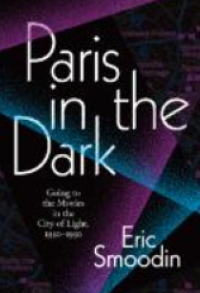
Text
E-book Paris in the Dark : Going to the Movies in the City of Light, 1930–1950
Penilaian
0,0
dari 5These listings provided the now vanished cinematic geography of prewar Paris. One could chart how movies moved through neighborhoods, the de-velopment (and closure) of cinemas, and the relative importance of movies to diferent parts of town (typically around eighteen cinemas in the periph-eral, working-class twentieth arrondissement and none in the first, which was spatially dominated by the Louvre). With these Pour Vous listings and with the more recent availability of other sources, particularly those put online by the Bibliothèque nationale on its Gallica website, I began work on a proj-ect examining Parisian film culture from the late 1920s until around 1950: the cinemas and the movies, the ciné-clubs and the preferred stars, the audiences, and also the role of film journalism.Despite the abundance of possibilities for seeing movies during this period and the mythic status of Paris as a movie capital, we still know very little about oing to the movies there from the beginning of the sound era to the first films of the New Wave. Richard Abel has provided a full sense of the film distribu-tion systems and exhibition experiences throughout France during the period just before World War I. Abel as well as Christophe Gauthier have unearthed and examined the history of the ciné-clubs and specialized cinemas that showed avant-garde, documentary, or animated films in Paris and elsewhere in France from the teens until about 1930, and Annie Fee has provided a his-tory of gendered and politicized Parisian audiences in the post–World War I era.1 From 1894 until the end of World War I, we have Jean-Jacques Meusy’s encyclopedic rendering of all manner of exhibition sites in the city, including descriptions of the streets where they were located, in the aptly titled Paris-Palaces, as well as in his two-volume Écrans français de l’entre-deux-guerres.2But for that period from the late silent era until just after World War II, little attention has been paid to the average moviegoer and to the cinemas along the grand boulevards and in the neighborhoods that specialized in commercial, feature-length films, or to the ciné-clubs and other places for seeing movies.
Ketersediaan
Informasi Detail
- Judul Seri
-
-
- No. Panggil
-
778.53 SMO p
- Penerbit
- London : Duke University Press., 2020
- Deskripsi Fisik
-
225 hlm
- Bahasa
-
English
- ISBN/ISSN
-
9781478006923
- Klasifikasi
-
778.53
- Tipe Isi
-
text
- Tipe Media
-
computer
- Tipe Pembawa
-
online resource
- Edisi
-
-
- Subjek
- Info Detail Spesifik
-
-
- Pernyataan Tanggungjawab
-
-
Versi lain/terkait
Tidak tersedia versi lain
Lampiran Berkas
Komentar
Anda harus masuk sebelum memberikan komentar
 Karya Umum
Karya Umum  Filsafat
Filsafat  Agama
Agama  Ilmu-ilmu Sosial
Ilmu-ilmu Sosial  Bahasa
Bahasa  Ilmu-ilmu Murni
Ilmu-ilmu Murni  Ilmu-ilmu Terapan
Ilmu-ilmu Terapan  Kesenian, Hiburan, dan Olahraga
Kesenian, Hiburan, dan Olahraga  Kesusastraan
Kesusastraan  Geografi dan Sejarah
Geografi dan Sejarah